
Positioned as a premium card, the MSI GeForce RTX 3080 Gaming X Trio stands head and shoulders above its peers with three of the latest TORX fans from the brand, extensive RGB customization, and a non-reference design allowing the use of three PCIe 8-pin connectors for an increased power draw.
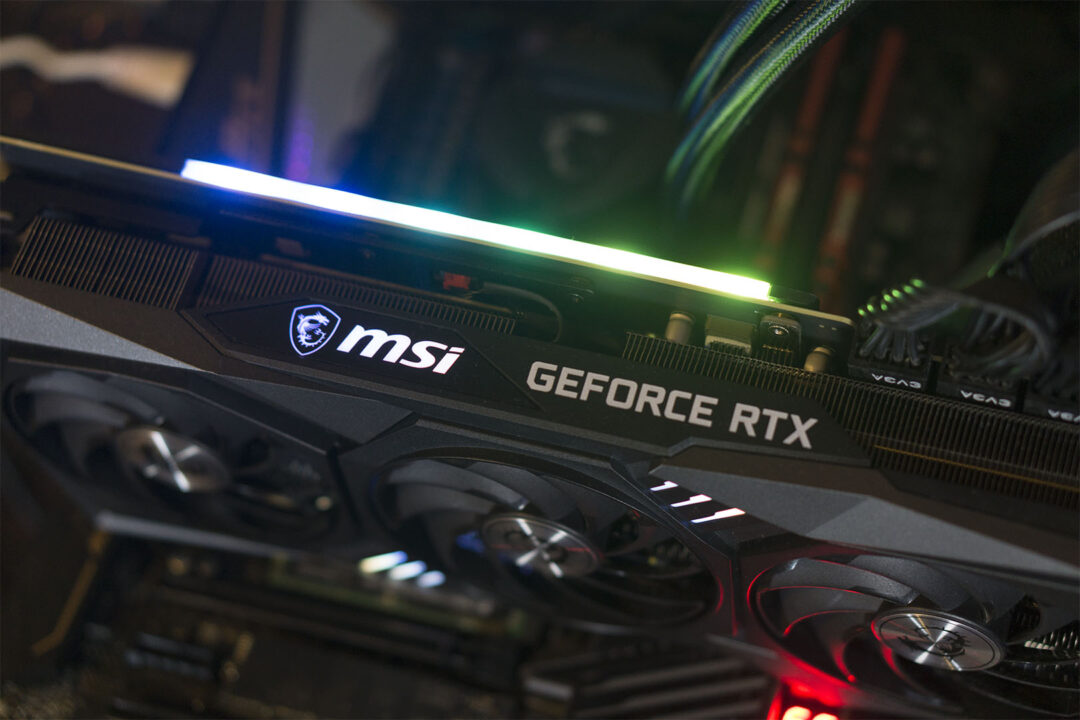
| Model | MSI GeForce RTX 3080 Gaming X Trio | NVIDIA GeForce RTX 3080 Founders Edition |
| GPU | GA102 | GA102 |
| Architecture | Ampere | Ampere |
| Transistor Count | 28.3 Billion | 28.3 Billion |
| Manufacturing Process | Samsung 8nm | Samsung 8nm |
| Boost Clock | 1815MHz | 1710MHz |
| CUDA Cores | 8704 | 8704 |
| Tensor Cores | 272 | 272 |
| RT Cores | 68 | 68 |
| Memory | 10GB GDDR6X | 10GB GDDR6X |
| TDP | 340W | 320W |
| Power Connectors | 3x 8-pin PCIe | 1x 12-pin connector |
| Display Connections | 3x DisplayPort 1.4a, 1x HDMI 2.1 | 3x DisplayPort 1.4a, HDMI 2.1 |
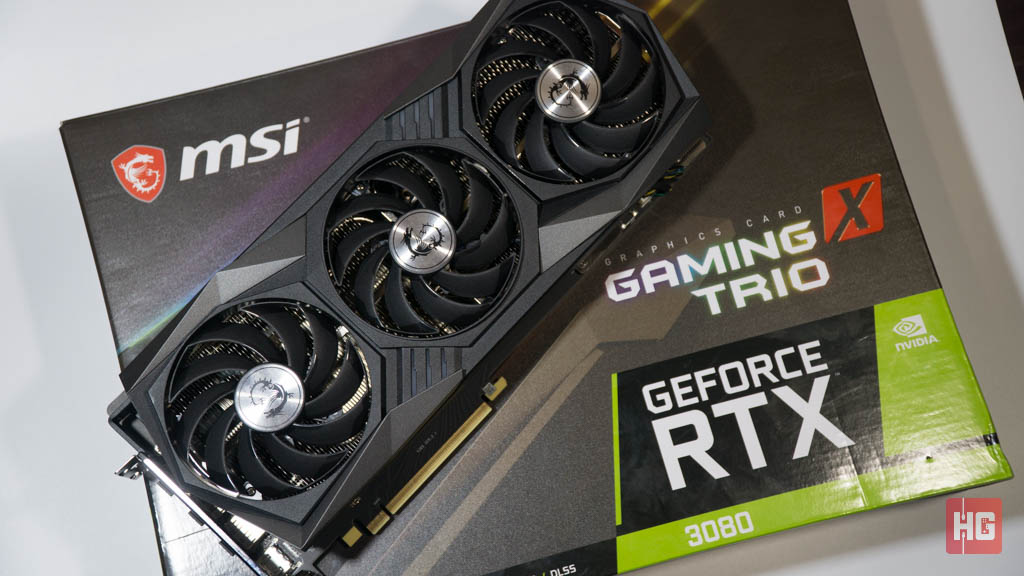 The MSI GeForce RTX 3080 Gaming X Trio is encased in a flashy box that displays most of its features such as its fans, RGB lighting, and overall design. Inside are the usual stuff from MSI like a thank you note, a catalog guide, a how to comic, and a quick user guide.
The MSI GeForce RTX 3080 Gaming X Trio is encased in a flashy box that displays most of its features such as its fans, RGB lighting, and overall design. Inside are the usual stuff from MSI like a thank you note, a catalog guide, a how to comic, and a quick user guide.

The most stand out inclusion in the package is a GPU support bracket to prevent this massive card from sagging. One of the most ingenious things about the bracket is that it is does not rest on the chassis itself but screws in onto the spare PCIe expansion slots if you’re case is large enough.

The MSI GeForce RTX 3080 Gaming X Trio is one beastly card to behold. It takes up 2.7 PCIe expansion slots on your case and is 323mm long. It weighs in just a smidge above 1.5kg, which is why its GPU support bracket is such a welcome accessory.

MSI improves on their Gaming X Trio formula with the RTX 3080 by adding their new Tri Frozr 2 cooling system. This new iteration now comes with 7 newly designed nickel-plated pipes that has been shaped square to make full contact to the GPU die and draw more heat from it.
Its heatsink also come with a few innovations from MSI. Instead of just being a solid hunk of fin stacks, it is now implementing Wave-Curved 2.0 Fins at the top to direct airflow as well as deflectors to let the air coming from the fans to be dissipated throughout.
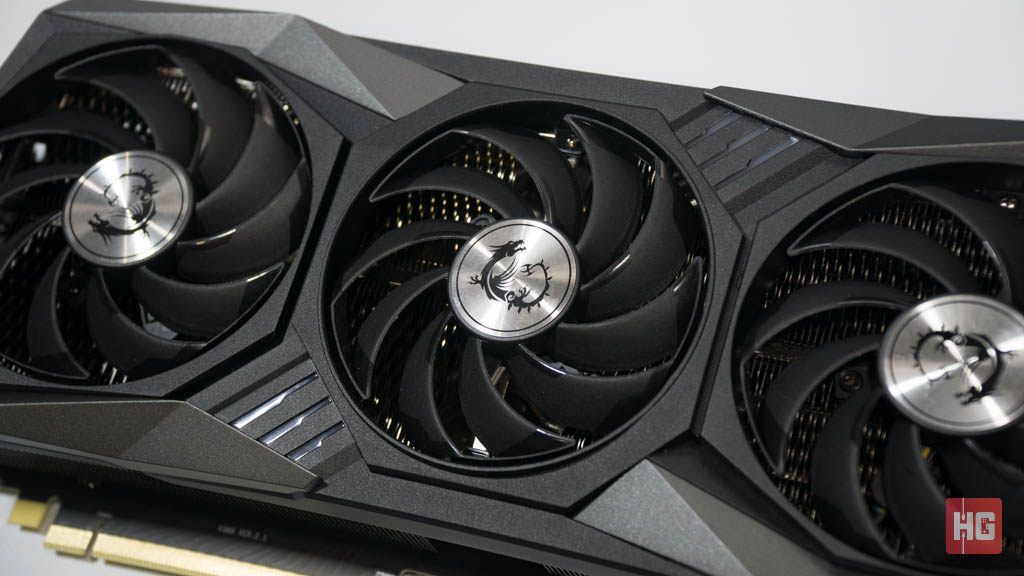
The brand’s Torx Fan 4.0 makes their debut on the Gaming X Trio which, according to the brand, fuses two blades into one at the tips to focus and accelerate airflow. Compared to their previous fans, this latest version of their fans can deliver up to 20% increased air pressure to the heatsink and thus allowing for better cooling.
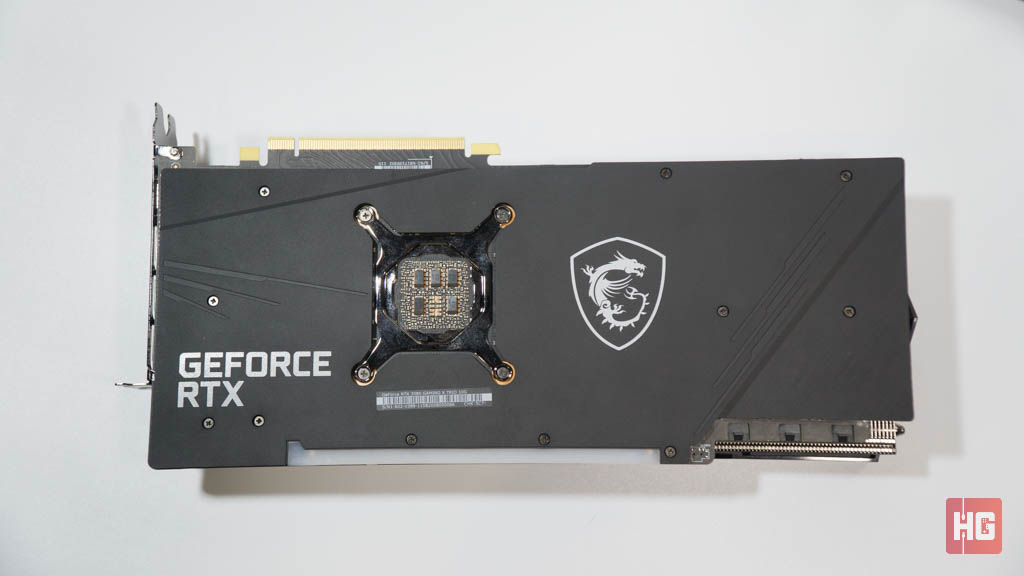
Its backplate feels quite a bit more premium compared to other GPUs in the market. Instead of existing for the sole purpose of aesthetics, MSI is using a graphene composite on the Gaming X Trio’s backplate to draw heat out from the card.

MSI surprisingly tones down the RGB implementation in this generation of the Gaming Trio X rather than doubling down. The four RGB wings have been replaced by six RGB slashes, as we like to call it, which is a bit more tasteful than what we expected previously.

A large, diffused strip on the backplate and the MSI logo on the side also lights up in RGB. All lighting settings and synchronization for all compatible components can be customized through the Dragon Center.

MSI is using a non-reference PCB on the RTX 3080 Gaming X Trio. This allows them to have a bit of fun with the design as well as the end performance. They are implementing three 8-pin connectors to increase overclocking headroom instead of having only 8-pin PCIe power connectors. All this power is managed by a 13-phase VRM for the GPU itself and 3 more for the memory.
The MSI GeForce RTX 3080 Gaming X Trio also runs just a bit faster compared to the reference RTX 3080 Founders Edition. The card runs at 1815MHz, which is 100MHz more than the vanilla boost clock of 1710MHz. Of course, the card can achieve higher clocks that this even when left on its own devices as you will see on our benchmarks later on in this review.

Though its clock speeds and power connectors are not vanilla, display connections are pretty bog-standard. At the back are four choices for your displays: three DisplayPort 1.4a ports and a single HDMI 2.1 port.

For this review, we partnered up with MSI to bring out the most we can with the MSI GeForce RTX 3080 Gaming X Trio. As such, we have a slight upgrade for our usual test setup. To preserve parity, however, we will also be running our set of benchmarks on our regular test bench for future references.
As for our tests, we decided to revamp our choice of software to better reflect the current graphical landscape in games. Which is why we are removing some of our older titles and replacing them with more recent games to tax next generation PC components.

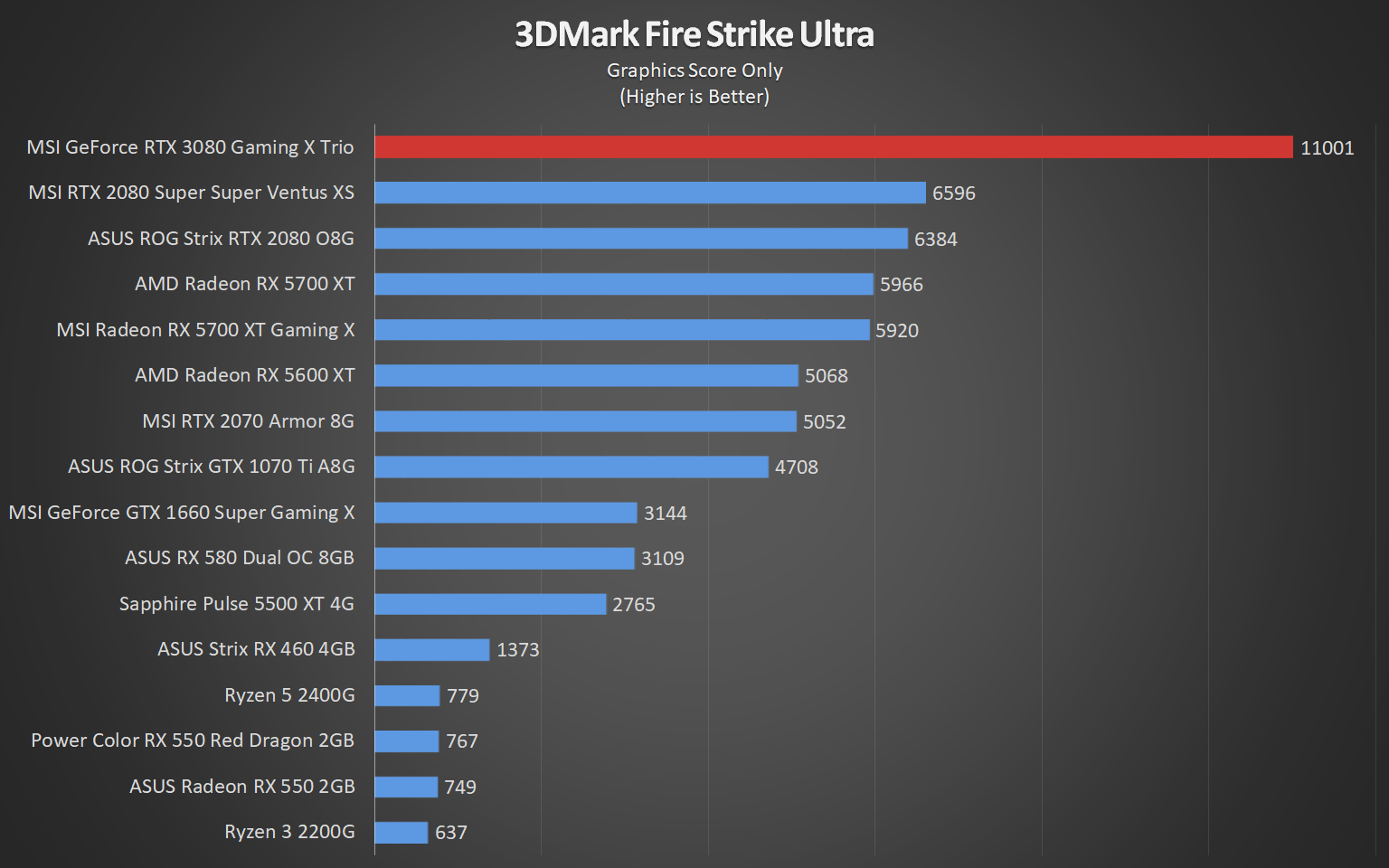

3DMark Fire Strike showcases the capabilities of the DirectX 11 API in high-performance gaming PCs. Its graphics are rendered in real-time with enhanced detail and complexity to test GPUs to their limit.

Time Spy is one of the first benchmarks that fully utilizes DirectX 12. Meant as a stress test for Windows 10 gaming PCs, it uses DirectX 12 features such as asynchronous compute, explicit multi-adapter, and multi-threading.

The world’s first dedicated real-time ray tracing benchmark, Port Royal puts cards with support for Microsoft DirectX Ray Tracing against each other to see what kind of realistic and practical examples of ray tracing they can render.

Far Cry New Dawn uses the Dunia 2 engine to beautifully render its open world map. Long draw distances, environmental effects, detailed foliage, and hectic action scenes make it a good candidate in testing GPUs.

Red Dead Redemption 2 uses Rockstar’s RAGE Engine that allows it to render vast expanses such as wilderness and cityscapes, simulate weather and lighting conditions, while still allowing granular detail of objects. It can also run using either Vulkan or DirectX 12 APIs.

The Division 2 utilizes the Snowdrop engine which allows it to render New York City with a great amount of detail and visual effects. Eye candy in the game include Global Illumination, Volumetric Lighting, realistic day and night cycle, and general high-resolution textures.

The latest entry in Lara Croft’s adventure, Shadow of the Tomb Raider focuses in improving graphical realism such as how objects interact with light, detailed textures, and improved screen-space reflections on surfaces thanks to its Foundation Engine.
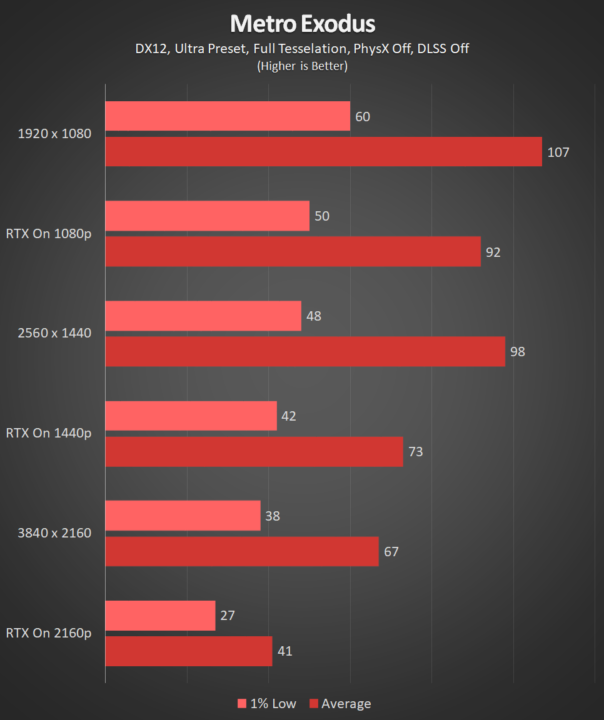
Metro Exodus moves on from the closed areas its prequels and embarks on a semi-open world journey. A larger world means more details while still preserving the level of detail on vegetation and tessellation on textures. The game also comes with heavy particle and lighting effects as well as support for ray tracing.
1080p – MSI GeForce RTX Gaming X Trio proves to be somewhat overkill. It’s reaching the point that our test bench becomes CPU bound in pumping out the frames.
1440p – The real sweet spot for the card as it is able to provide blazing fast performance while still delivering higher resolution for additional details.
2160p – If you’re into 4K gaming, then the RTX 3080 is definitely the card for you. It can attain a steady framerate even in triple A games without needing to turn down any settings from its maximum spot.
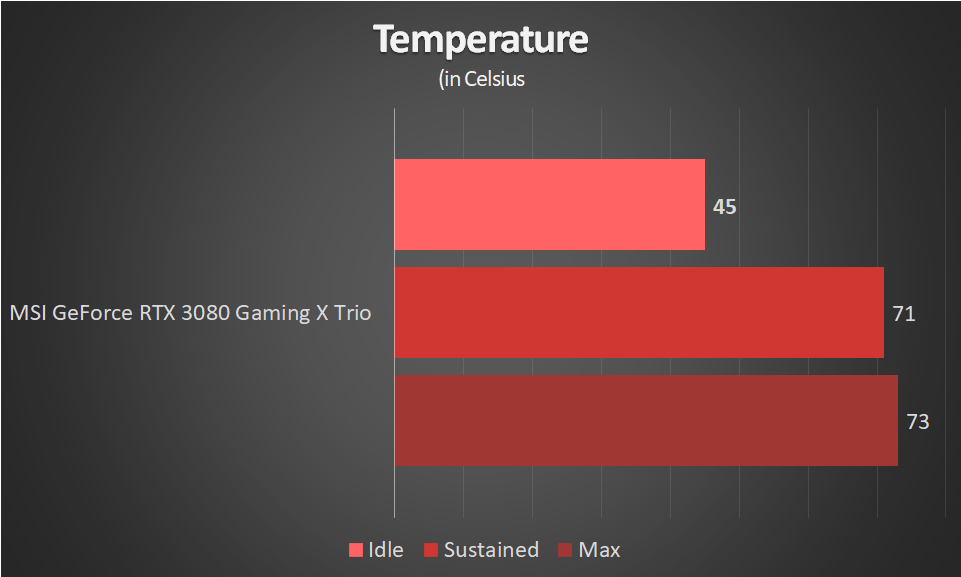
The MSI GeForce RTX Gaming X Trio is a power hungry card. At max, the whole video card can chug up up to 340W alone while sustaining clock speeds of around 1965MHz which is more than its advertised boost clocks. While idle, however, the card will only sip at a minimum of 24W.

As far as system load goes, our whole system rocking an AMD Ryzen 3800X consumes a total of 470W through the wall when under heavy load. This means this particular setup will work with a 650W power supply. Those who will use higher end processor like an AMD Ryzen 9 3950X or an Intel i9-10900K would probably be more comfortable with a 750W or higher PSU.

The MSI GeForce RTX 3080 Gaming X Trio is a worthy take on the NVIDIA’s RTX 3080 formula. Its better cooling solution allows it to stay cool and whisper quiet even under intense gaming sessions while still achieving higher clocks that the advertised boost clocks on the box.
Playing games with the card is an absolute dream for any enthusiast. At 1080p, it is absolutely overkill on any title even on the highest of settings. 1440p brings about a better performance at an increased resolution and detail while 4K gaming at high framerates without turning down any graphical settings is now possible thanks to the RTX 3080.

At PhP 52,000, the MSI GeForce RTX 3080 Gaming X Trio does cost a pretty penny. With its performance, cooling solution, and overall premium package, it’s a price most will be willing to pay just to get the best performance they want from a GPU which is why we are giving the card our seal of approval.
If you have been waiting for a major graphical performance leap for your PC, then the MSI GeForce RTX 3080 Gaming X Trio won’t disappoint you.
